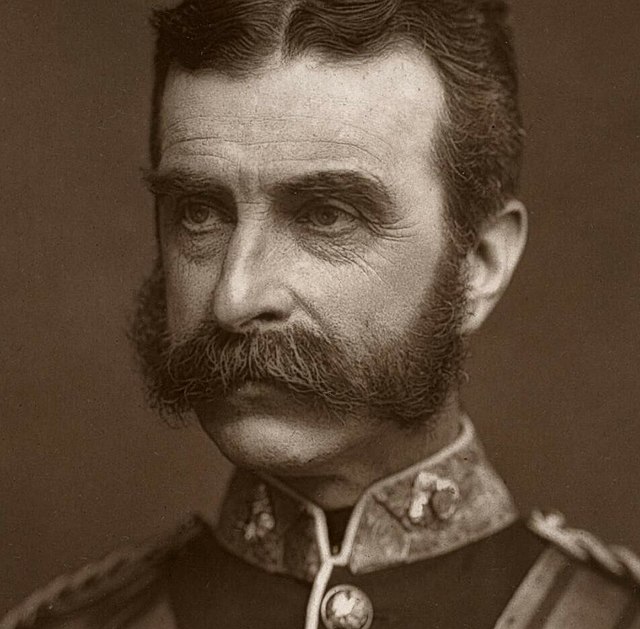The Battle of Isandlwana on 22 January 1879 was the first major encounter in the Anglo-Zulu War between the British Empire and the Zulu Kingdom. Eleven days after the British invaded Zululand in Southern Africa, a Zulu force of some 20,000 warriors attacked a portion of the British main column consisting of approximately 1,800 British, colonial and native troops with approximately 350 civilians. The Zulus were equipped mainly with the traditional assegai iron spears and cow-hide shields, but also had a number of muskets and antiquated rifles.
Lieutenants Melvill and Coghill flee the camp with the Queen's Colour of the 1st battalion of the 24th Regiment
Lord Chelmsford
Cetshwayo, c. 1875
Zulu warriors, 1882
Frederic Thesiger, 2nd Baron Chelmsford
General Frederic Augustus Thesiger, 2nd Baron Chelmsford, was a British Army officer who rose to prominence during the Anglo-Zulu War, when an expeditionary force under his command suffered a decisive defeat at the hands of a Zulu force at the Battle of Isandlwana in 1879. Despite this defeat, he was able to score several victories against the Zulus, culminating in the British victory at the Battle of Ulundi, which ended the war and partly restored his reputation in Britain.
Frederic Thesiger, c. 1870
Lord Chelmsford sketched by another officer at the Battle of Ulundi
Defeat at Isandlwana
Funerary monument, Brompton Cemetery, London







